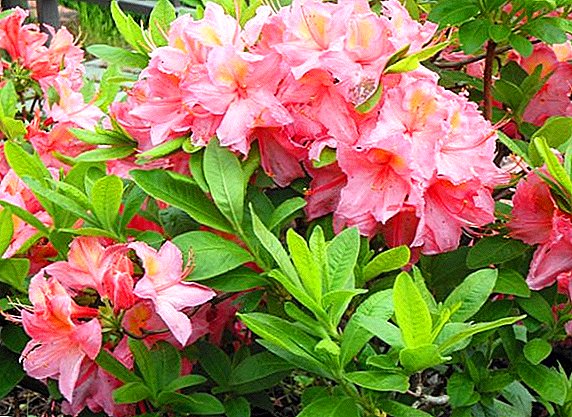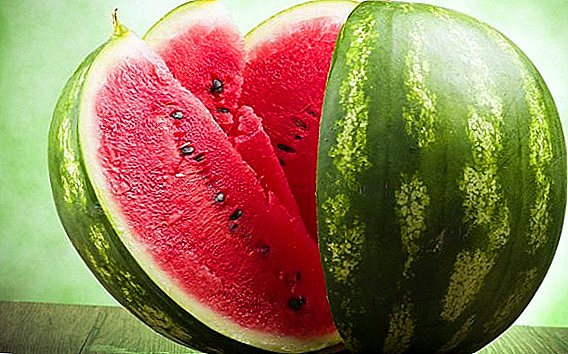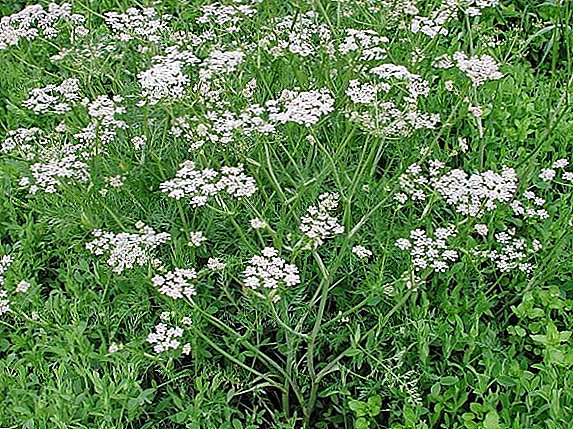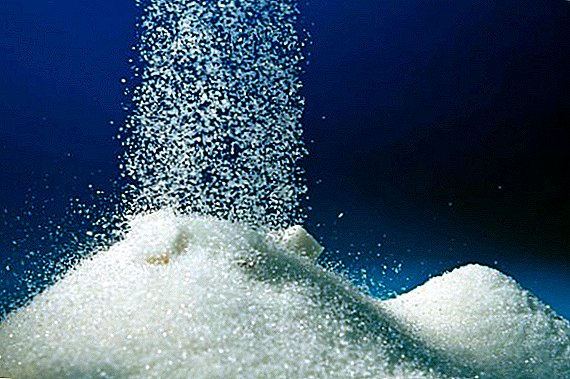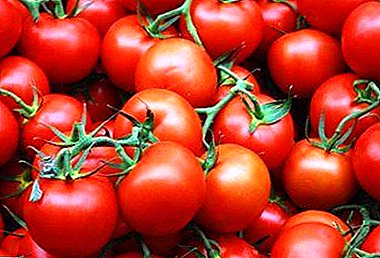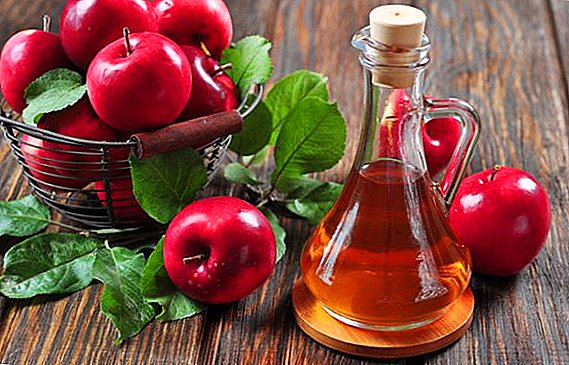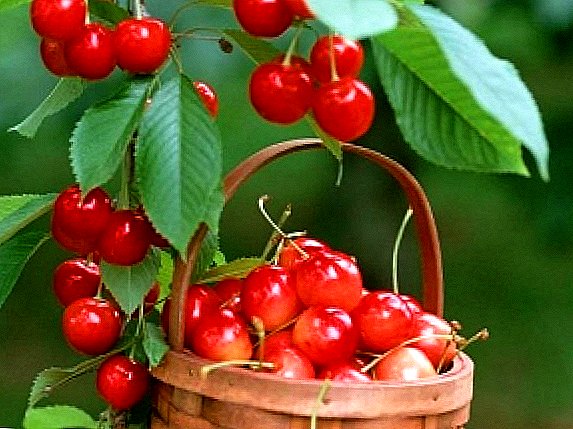
Cherry orchards perform not only a fruitful function, but also an aesthetic one. These powerful trees with elegant glossy, bright green foliage shimmer very beautifully in the sun and delight the eyes with a variety of different shades of berries from golden yellow to maroon, almost black. Probably not every gardener knows that this southern beauty arrived in Europe before our era.
Since then, many varieties have undergone complete domestication, leading to the sustainable development of ecotypes. On the territory of the former USSR, there are four of them - this is the middle Ukrainian, Moldavian, Crimean and Caucasian. These groups are distinguished by the formation of their characteristic features, which are inherited - the quality and taste of the fetus, resistance to climatic features, diseases and pests, etc.
The most delicious varieties of sweet cherry
Since there are a great many varieties of sweet cherries, it is worthwhile to get acquainted with at least some of them in order to choose the tree that suits your taste.
Variety "Kuban cherry".

Fruits of the Kuban cherries can be called large. Their maximum weight reaches 8.2 g. Dark red berries of a round shape have a light pink flesh and the same light juice. Taste sweet, juicy, dessert. The stone and stalk are easily separated from the berries. It is possible to harvest this variety in the first month of summer, therefore Kubanskaya is considered a mid-early sweet cherry.
Trees of this variety have a wide, massive crown of average thickness. The leaves are dark green, oval, large, with a slightly pointed tip. Flowering begins early. The first harvest can be collected from a five-year tree. Despite the fact that the sweet cherry is a heat-loving tree, this variety tolerates winter frosts, but, surprisingly, it sometimes reacts badly to frosts in spring. With favorable growing conditions and proper care, yield is 12t / ha.
The advantages of the Kuban variety It is possible to name the early ripeness of fruits, attractive appearance and excellent taste characteristics, rich yield and good resistance to frost.
Disadvantages same are: poor resistance to diseases such as coccomycosis, the presence of a very wide crown.
Variety "Early Pink Cherry".

Fruits of this variety small, about 5g, yellow with a red blush. The flesh is cream-colored, juicy, the juice is transparent. The stone is dark yellow, poorly separated from the pulp. The berries are very beautiful, especially in the sun, these gardens look amazing. The variety of this sweet cherry belongs to mid-ripening, the harvest can be gathered in the middle of June.
Depending on the sun, it ripens unevenly. With a large amount of precipitation, berries can crack. On the tree, they are stored well, they do not crumble; when overriding, the taste qualities only improve, the taste becomes more dessert. When removing the crop easily crumpled, quickly covered with dark spots. Therefore, this variety of sweet cherry is absolutely not suitable for transportation.
Early Pink Trees refer to medium height, the maximum height is 5m. Deciduous crown rounded, not very thick. The bark is gray, rough, with a cherry sheen, has a longitudinal cracking. Leaflets elongate, ovate, with a slightly pointed tip, up to 18 cm long, and up to 7 cm wide on young shoots. Enough long, thin, slightly bumpy petiole, light brown.
Flowering begins early. In the inflorescence usually up to 3 flowers. Flowers rounded, white, with a wide cup. With good care fruitfulness comes to the 4th year of planting. Independently not pollinated. When the spring is hot, the flowering time is shorter. The root system is strong enough to allow water to be extracted from deep soil layers. Mature trees with favorable conditions and proper care can give up to 70kg harvest from one unit.
Indisputable the virtues of this variety are very high resistance to frost. Good resistance to diseases such as coccomycosis and monoliosis. Excellent yield and attractive fruit. Saturation dessert taste of berries.
A very big disadvantage is the low transportability of the fruit. These berries should be consumed immediately after harvest. They are small and ripen unevenly.
Variety "Napoleon black cherry".

The fruits of this cherries are widely in demand, as they are excellent for fresh consumption, for making compotes and preserves, and for freezing for the winter. They have a rich dark red color and the same dark juice, rounded shape, fairly dense pulp and thick skin. Taste sweet, dessert with a little sourness.
By weight reach 6.5 g, so they can be attributed to large berries. Stone medium size. This variety has excellent transportability and does not lose its taste and appearance when stored for up to 2 weeks in a cool place. The harvest is ready to be harvested at the end of June, which relates the variety Napoleon Black to the late ripening varieties.
Trees of this variety high, reach 6 meters. Leafy crown dense, spherical. Resistance to frost is average. With good care in fruiting come from the 4th year after planting. Fruits annually. Average yThe birth of one sweet cherry is 28kg berries
This sort of sweet cherry many advantagesthat makes it quite versatile and in demand. This is an excellent transportability, rather long shelf life of the crop, and good fruitfulness, demanded taste and appearance characteristics. A wide range of berries use. Sufficiently resistant to disease, but sometimes there is a defeat cherry fly, which is a small drawback.
Probably, few gardeners know that with proper care on limestone soil with a high content of humus, cherries can be old-timers and grow to 100 years.
Care features for different varieties of these trees differ slightly depending on where they are planted. For example, in the northern regions of Russia seedlings are planted only in the spring, and in Ukraine, known for its fertile black soil, the tree does not need careful feeding. Also quite simple is the care of cherries in the Moscow region.
But we should not forget - if we want to receive the maximum level of harvest from the garden - it is necessary to know some subtleties of caring for it.
Subtleties care for cherries
How to cut a sweet cherry

Spend sweet cherry pruning necessary because the growth of the trunk and branches is very intense, which can lead to subsequent inconveniences during harvesting. AT first 5 years after landing It is necessary to shorten long increments up to 50 cm, and pay special attention to the slope of the growth of branches (preferably an angle of 45 to 50 degrees), since the wood of the cherries is very fragile and when the branches break, the bark is likely to be damaged in large sections of the trunk.
Main skeletal branches very strong, for the formation of the crown is enough to leave 5 - 6 pieces, of which are formed 3 tiers of branches. One year after the formation of the upper single branch, the center conductor must be cut. Semi-skeletal branches formed on the two lower tiers of the branches that have an inclined position. You can give this slope and by tying.
Exist three basic forms of trimming - It is rarefied, flattened and cupped. Basically, these forms differ in the number of branches left in the tiers of the tree. When the shape of the crown of the cherry is formed, pruning is carried out according to the usual schedule of fruit trees - dry, damaged or old branches are removed in the spring, and those branches that grow at the wrong angle or create excessive crown density.
However, you should know that the sweet cherry is not so thick branches as other fruit trees, so it can do without thinning pruning. Everything wounds on a tree Be sure to be treated with garden pitch and smeared with paint or linseed oil, since the cherries are characterized by an increased amount of blood flow, which can lead to illness or even death of the tree.
How best to feed the cherry tree

If you are committed to getting abundant and beautiful harvest, then of course you should take care of feeding your garden. It is necessary to soil the soil evenly with both mineral and organic substances. For the root system of the tree is better to use liquid dressings, because dry can adversely affect the condition of the tree. Once every three years around cherries, the soil is dug up with the addition of 8kg organic fertilizer - it can be rotted manure or fermented chicken droppings.
Fresh organic can not be used because it can burn the root system of the tree, besides fresh fertilizers decompose much longer in the ground and, therefore, can not fulfill its purpose in time. Nitrogen fertilizer, in liquid form, is watered on a tree in early spring and mid-summer, it can be ammonium nitrate, as well as ammonium sulphate.
Fertilizers with phosphorus and potassium help a heat-loving tree easier to survive the cold, so they fertilize the soil in the fall. Also, the use of these particular minerals increases the sugar content in the berries by 25%. Such fertilizers include superphosphates, potash salt, buckwheat ash, which is also rich in lime - an important element for cherries during the fruiting period. The amount and type of fertilizer may vary depending on the composition of the soil. Thus, it was noted that mineral fertilizers are most important and useful for sandy soils, while organic fertilizers are less effective.
Proper watering cherries

For cherries, additional watering both in summer and before winter. Experienced gardeners advise first watering to hold before the flowering of the tree, because during the blooming of flowers it is not recommended to do this - the tree can shed the ovary. The following hold several times during the summer.
It is very important to water it at the end of the autumn - during the digging of the near-stem circle, the cherry is poured abundantly with water (it is necessary to use up to 100 liters of water on an adult tree) to charge the soil with moisture. After watering It is desirable to mumble near-stem circle. You should know that the cherry does not like stagnant moisture, so when planting it is worth considering the depth of groundwater.
Insofar as sweet cherry frost resistance is low, and in severe frosts even roots may die, it is necessary to carefully prepare the tree for the winter.
Also interesting to read about the autumn planting cherries
The best ways to protect the garden from pests
To start in the garden clean all the fallen leaves and pruned branches that must be burned. In the fallen leaves and other debris contains a huge number of disputes of various diseases that our garden can infect. After digging the area is carried out, so that the larvae of all the pests that went into hibernation were destroyed by frost.
More than 200 years ago, it was noticed that trees whitened with lime mortar, it is easier to tolerate severe frosts than not treated. Besides, lime whitewash protects the tree from sunburn - after sunset the winter has a sharp drop in temperature, which our thermophilic beauty can not tolerate, and also kills the larvae of various insects left in the bark of the tree by insects.
Young trees are whitened chalk solution, because lime can damage their still weak bark.

Sure to wrap wrapping warming materials. They can be various rags, roofing felts, pine and spruce branches, which are also useful to mumble the near-wellbore circle. These measures are necessary not only to shelter from frost, but also to protect the tree from large pests. The roots of the tree perfectly protect a large snow drift, but snow must be chipped from the branches, since the wood of the cherries is very fragile, and damage to the branches is possible due to the heavy weight on them.
The most dangerous pests for cherries can be birds that can peck almost the entire crop from the open, unprotected branches. No wonder this beauty is called bird tree, the birds love it very much, therefore it becomes almost impossible to protect, a tree that is too tall, even if you use all means of protection (reflective shiny elements, foil, rattles, stuffed animals, etc.). All of these measures only frighten off insistent raiders for a short time.
Sometimes gardeners use covering nets for woodwhich are lightweight and easy to use - such a security measure will help you save most of your harvest. One of the dangerous small pests is considered to be an unpaired silkworm and aphid, damaging the leaves and young shoots of the tree, the treetail, the larvae of which eat the berries from the inside. To protect the tree from these insects use IntaVir and Insegar solutionsTreated wood.
In summer and autumn, it is necessary to process the tree Bordeaux mixture, which will prevent infection of the garden with moniliosis or gray mold, coccomycosis and nodules. Before processing it is necessary to clean the tree from all areas damaged by diseases (leaves, branches, berries).
Since the sweet cherry is a self-fruitless tree, during its planting it is necessary to form a garden so that at least 2 - 3 varieties are present for cross-pollination. Also, cherry trees are perfect for this purpose, if their ripening time coincides with the cherry.
It is best to plant a sweet cherry in early spring, otherwise she may not have time to take root before the frost and simply can not stand them. Place for landing must be prepared in the fall. To do this, clean the area from weeds and debris, pour out up to 2 buckets of humus to the loosened bottom of the landing pit, mix with the ground and leave it until spring.
In the spring in the same pit add superphosphate and ash, and all mixed up. In no case cannot be deeply buried seedling in the ground, its root neck when planting should be 5 cm above ground level. Since the sweet cherry is a large tree, the distance between the trees should be at least 3 meters.


